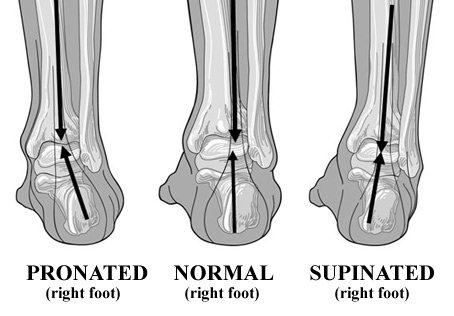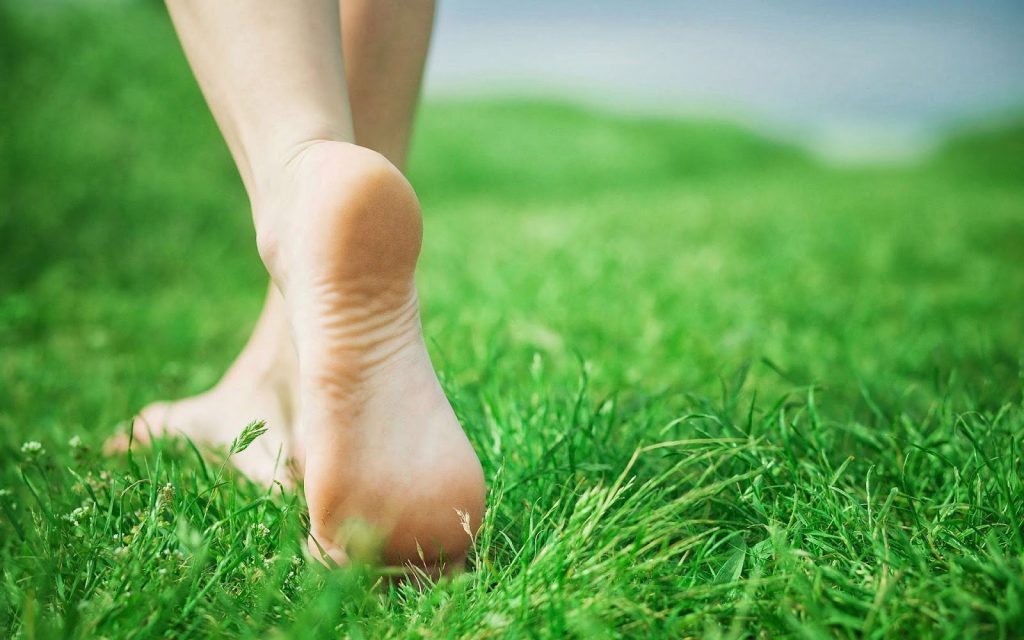5 Reasons its valuable to allow your feet to experience both Pronation and Supination.
The foot wasn’t just designed to LOOK pretty, its designed to MOVE and do a shit ton of cool stuff that influences the experience of the whole body above.
The word Pronation when referring to the human foot seems to have had a pretty bad run. Pronation seems to be demonised, with Supination sitting high on a pedestal… Why is it not advertised that to be able to experience both of these movements is of great value? Just like opening and closing your eyes.. flexing and extending the spine.. clenching and relaxing the jaw.. why did the foot become so different?
What is pronation and supination of the foot?
Lets start with a general description and some characteristics of each. There are different types of pronation and supination, though lets try to keep it simple.
Pronation = Mobile structure, medial arch lengthening and flattening, heel bone leaning towards centre (calcaneal eversion), talus bone rotating towards centre.
Supination = Rigid structure, medial arch shortening and lifting, heel bone leaning away from centre (calcaneal inversion), talus bone rotating away from centre.

In the human gait cycle (walking) foot pronation is ideally present when we weight bare into the foot. The foot mobilises to adapt to the environment like a shock absorber, the tissues react by lengthening and loading, ready to use this energy to contract and transition the foot into a rigid supinated structure to propel the body towards the next step. This makes a pronation a highly valuable experience, and in fact helps us to be able to access a quality supination. Load to Explode!
Now just because a foot looks pronated or supinated, doesn’t necessarily mean it holds all of these characteristics. I have worked with higher arch supinated looking mobile feet, and flat pronated looking rigid feet. Assess everyone individually. The rules don’t alway apply. Humans are cool and unique like that 🙂
There seems to be a trend of people presenting with “pronated” looking feet, who have been told that it is bad, and are now doing all they can to steer clear of pronation and encourage only supination. This may be via the influence of a shoe, orthotic or insert, foot shortening drills, and even doing there best to hold a static supinated foot posture throughout the day (whoa that sounds exhausting). This is often at the expense of allowing the 26 bones and 33 joints of each foot to do what they are designed to do… Move freely.
it would be nice to be able find a centred foot posture where we can access both pronation on supination right? Perhaps the fixation of creating a particular posture or look of the foot, could actually be limiting the bodies potential to find that balance and happy place in between.
Pronation and Supination are like left and right, up and down, hot and cold, light and dark, mobility and rigidity… its the experience of both that creates awareness and perception of centre and balance in between.
In human movement, especially walking, there is a time for pronation, and a time for supination, and both are valuable movement experience.
Perhaps its time to consider allowing your body to experience both

I would like to share with you 5 Reasons its valuable to allow your feet to experience Pronation and Supination below 🙂
1. The human body CAN do both. Just as we are capable of exploring flexion and extension of the spine (bending forward and backward), and want to hold our head in the centre so that it can turn left and right.. why are pronation and supination of the foot any different? They are both valuable experiences that allow us to interact with our environment. Sure problems can arise with an overly pronated looking foot that struggles to experience supination (and pronation..).. though a foot that holds a supinated posture and struggles to access good pronation can be equally problematic. Exploring the experience of both allows us to find the sweet spot in the middle. We can, and DO do both, perhaps one better than the other, so why not really explore these movements and make them strong and available for our body to use.
2. Joint motion of the foot influences the body above. Yep.. its all connected. If something moves, everything moves.. Where something doesn’t move, other stuff moves more.. and where things move too much, other stuff may move less. There is always a trade off somewhere. If a foot is being held static in a specific idealised posture, this will have influence on the experience of the body above. If we can allow the foot to experience motion either side of centre, this can influence structures above being able to experience the same. Anterior / Posterior pelvic tilt for example. How many people are stuck in an anterior pelvic tilt a.k.a duck butt, and no matter what they do little changes? Usually there is much focus and dedication on getting the pelvis to move, though no-one connected the dots to consider that motion available to the foot may be influencing motion available to the pelvis. Teach the foot to move either side of centre, and allow the pelvis to move either side of centre.
Liberating motion of the foot, can liberate motion of structures above.
3. Tissues respond to joint motion. One of my inspiring mentors, Gary Ward, author of the amazing book “What the Foot” awakened me to the fact that when the human body is in motion ‘Joints Act, Muscles React”. Seems obvious right? So why do we continue to take the same approach of only training and treating body tissues with their influence on structure in mind? What If we flip our awareness to how the motion of structure, or lack of motion, may be influencing the tissues? We might get a completely different experience and result.
This is quite different to how we are usually taught that our anatomy works.. Usually we’re taught that muscles make the bones move and we seem to we run with that. Yes this is possible and available to us, though in motion like when we walk for example, we don’t think about creating every single muscle contraction to move our bones around. This would become very tiring and confusing.
When we walk, muscles can experience lengthening and shortening in 3 dimensions depending on how the structure they are attached to is moving. This allows the tissues to lengthen before they contract, or load to explode. Making movements like walking more effortless.
I like to think of the example of throwing a ball. If you wind the arm back to load the tissues before you throw the ball you achieve a more effortless powerful throw VS if you just throw the ball without winding up the tissues, it would take a greater effort throw the same distance.
Similar when we walk.. The Structure / Soft Tissue relationships are set up in such a beautiful way, that if we allow the bones/joints to interact and articulate with each other the way we sculpted them to in the first place, the tissues react to this motion, load and unload in there optimal timings, and carry us around effortlessly.
Our development, lack of motion, daily habits, hobbies, sports, injures, surgeries, emotions, perceptions, life all influence this.. and this is where we can benefit from the guidance of a trained eye, to bring awareness to the spaces in our movement that may be avoided or unexplored, and encourage the exploration and restoration of confidence in these spaces to create new neurological experiences available for the brain
Allowing the foot to experience healthy pronation/supination has an influence on the structures above, and therefore influences the connective tissues that react to this motion.
Maybe your ass don’t fire well because your foot don’t move 😉
4. Centre exists because of the spectrum that surrounds it. Exploring both pronation and supination of the foot gives the brain an experience of the spectrum and movement potential that is available to it. We would all like to find a more centred, neutral resting posture.. A place where body tissues are in a happy resting state, not too long, not too short, but relaxed. We are often so fixated on stabilising and and trying to create and hold an idea of the perfect posture, that we miss out on fully exploring our the movement spectrum that defines our centre.
Without any expectation of creating what we perceive to be the “perfect” looking foot, what if we allow the foot to find its own happy place by giving it the experience of moving around centre? By exploring the movement that is available to us, we can shift our perception of centre, and therefore influence our overall alignment.
5. It feels amazing. I never cease to be amazed at the response i get from people when I encourage them to experience pronating and resupinating their feet.. Often movements they haven’t explored for a long time. “I didn’t know I could do that” … “My body feels so light”… “I can feel muscles working that I don’t usually feel”.. “my back feels better” are all common responses. Nothing like feeling those sleepy glutes muscles come to life.
Where to now??
Get assessed, and get exploring in your body. Consider working with someone who respects both of these movements, can help guide, encourage, and bring awareness to the spaces in your movement that may have been avoided for some time.
When exposing the foot to both pronation and supination movements sometimes the shape of the foot may change, and sometimes it doesn’t… and thats ok.. Though usually the foot FEELS better, and MOVES better as does the rest of the body.. and isn’t what matters most??
If you are interested further in this topic I can’t recommend Gary Wards book “What the Foot” enough. Its a game changer…
Therapists, trainers, movement enthusiasts…. once the books blown your mind, look into the Anatomy In Motion immersion course where you spend 6 days exploring the human body in motion. Immerse yourself in the “Flow Motion Model”. A map of the gait cycle broken down into 6 phases, detailing what each bone in the body is doing in all 3 dimensions, and how the body tissues react, and how the mass is being managed within each moment in time. An inspiring, life changing experience that will change the way you look at the body forever


